In the valley of the Vajont River, about a hundred kilometers north of Venice, stands an old, disused dam. The vast wall of white, wedged high up in the rocks of the narrow gorge, was constructed to harness the waters of a small mountain river in order to create a lake from which hydroelectric power could be generated to feed northern Italy's postwar development and economic growth. But the engineers and geologists ignored the early warning signs, leading to a disaster of cataclysmic proportions.
The Vajont Dam was constructed between 1956 and 1960. It was a double-curvature arch dam, rising 262 meters above the valley floor, and had the capacity to hold back 168 million cubic meters of water. At the time of its construction, it was the tallest dam of its kind in the world.

The Vajont dam and reservoir on September 1963, one month before the disaster.
During construction, it was realized that the slopes of Monte Toc were not as stable as previously thought. This was confirmed when a survey found that the mountain's slopes consisted of ancient landslide deposits and not solid rock. But the designers of the dam concluded that a deep-seated landslide was extremely unlikely.
In February 1960, filling of the dam was initiated for the very first time. By next month, the level of the reservoir had reached 130 meters above the level of the river, when the first landslide occurred. Because the landslide was minor, filling was continued although an eye was kept for any movements in the banks. In October 1960, when the depth of the reservoir had reached 170 meters, a 2-km-long fracture appeared and another landslide became imminent. In November, a large chunk of the hill, 700,000 cubic meters in volume, detached and fell into the lake creating a seven foot high wave that propagated across the reservoir.
The designers realized that the rising water table was causing the slope of the mountain to loose its hold, and as a result the reservoir was gently dropped back to 135 meters. More tests were conducted, and based on the results, it was determined that by slowly rising the level of the reservoir the movements in the bank could be slowed down. The strategy proved successful, and for the next three years, the reservoir’s depth was increased in a controlled manner. During this period, movement of the banks never exceeded more than a centimeter a day.
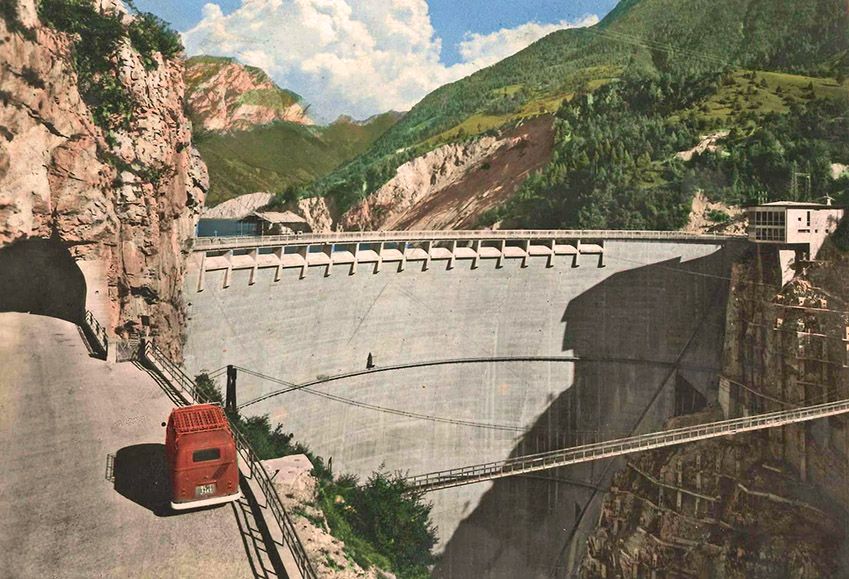
The Vajont dam in 1963, a few months before the tragedy.
The summer of 1963 was extraordinarily wet. Heavy downpour caused the water of the reservoir to rise to nearly 250 meters—30 meters more than the recommended depth. Only 15 meters of concrete prevented the lake from spilling over. During this time, displacement increased to as much as 3.5 cm a day. In late September, the water level was slowly dropped but the slope continued to move at an accelerated rate.
The mayor of Erto, a village located on the other side of the reservoir, became concerned and issued a manifesto urging villagers to evacuate, but few took action. The mayor of Casso also issued an evacuation order and posted notice of a possible wave from an anticipated landslide.
On 9 October, 1963, the water of the reservoir was at 235 meters. By then the slope was moving at an alarming 20 cm/day. That night, as precaution, traffic on the roads below the dam was restrained, but there was “nothing to be alarmed about,” telephone messages assured, “maybe a little water over the dam tonight.”
At 10:39 PM, the slope of Monte Toc gave away. Within 30 to 40 seconds, an estimated 260 million cubic meters of rocks and soil plunged into the lake completely filling the narrow reservoir behind the dam. At that time, the reservoir contained 115 million cubic meters of water. The mass of rocks drove the water out of the reservoir and over the dam’s crest in a rising wave 240 meters tall. The water crashed to the bottom of the gorge and rushed down the densely populated Piave Valley destroying several villages. In less than 15 minutes, more than 2,000 people were killed.
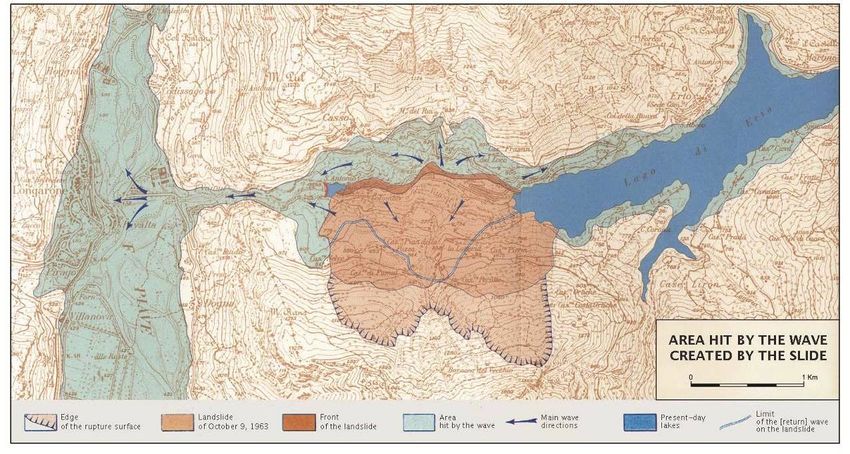
General map of the Vajont disaster. Image credit: Gianluca Casagrande
Micaela Colletti, a survivor from Longarone, one of the worst hit villages, remembers the night she lost her parents, her sister and her grandmother.
My father returned home from work as normal but almost straightaway he left again in the car, which had never happened before. Five minutes later I heard what I thought was a thunderclap. It was incredibly loud. My granny came into my room and said she was going to close all the shutters because a storm was coming.
At exactly the same moment all the lights went out and I heard a sound, impossible to describe properly. The closest thing I've ever heard to it is the sound of metal shop shutters rolling down, crashing shut, but this was a million, a billion times worse.
“I felt my bed collapsing, as if there was a hole opening up beneath me and an irresistible force dragging me out. I couldn't do anything. I had no idea what was happening.”

The town of Longarone, Italy, before the landslide.
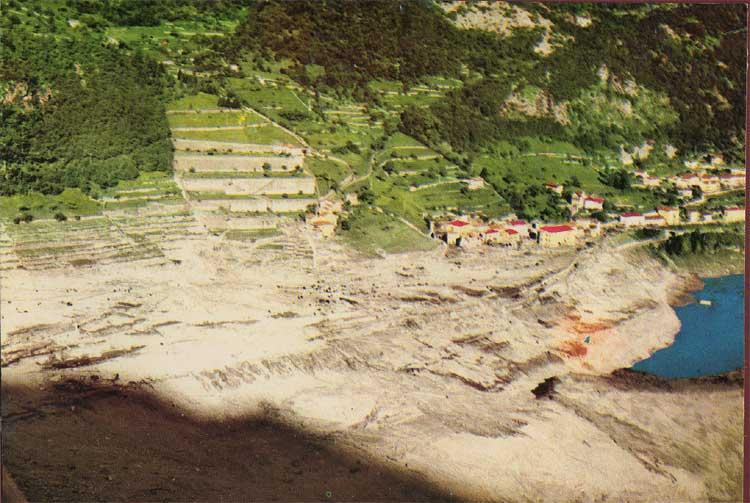
The town of Longarone after it was wiped down by a giant wave.
Micaela Colletti, then 12 years old, was hurled more than 350 meters through the air. She was pulled out the next day from under the debris.
Scars of the catastrophe still exist on the mountainside. The landslide had permanently blocked the gorge just behind the dam, but the dam itself remained intact and still stands today, although there is no water behind it. The village of Longarone was rebuilt and so was many others.
In 2008, the UNESCO described the tragedy as a “classic example of the consequences of the failure of engineers and geologists to understand the nature of the problem that they were trying to deal with.”
“The continuous rejection of the worst case scenario - a gigantic single landslide - by the authorities, by the electric power company and the government was in part a result of the lack of research on such large landslides,” wrote geologist David Bressan in the Scientific American.
There was also a political and financial conflict of interests. The Vajont dam was a gigantic investment that was supposed to provide energy to nearby large cities and industries, and many politicians were involved in its promotion and support. By the time the first landslide occurred, the project was on its last leg and nobody dared to abandon it.
The dam is now owned by a private company, and since 2002, it is possible to walk along the top of the dam as well as explore the now dry basin, filled with landslip.

Longarone before and after the flood. Photo: United Press International, 1967.

Death and destruction on the Vajont valley. This photograph was taken by the Inspectorate of Firefighters.
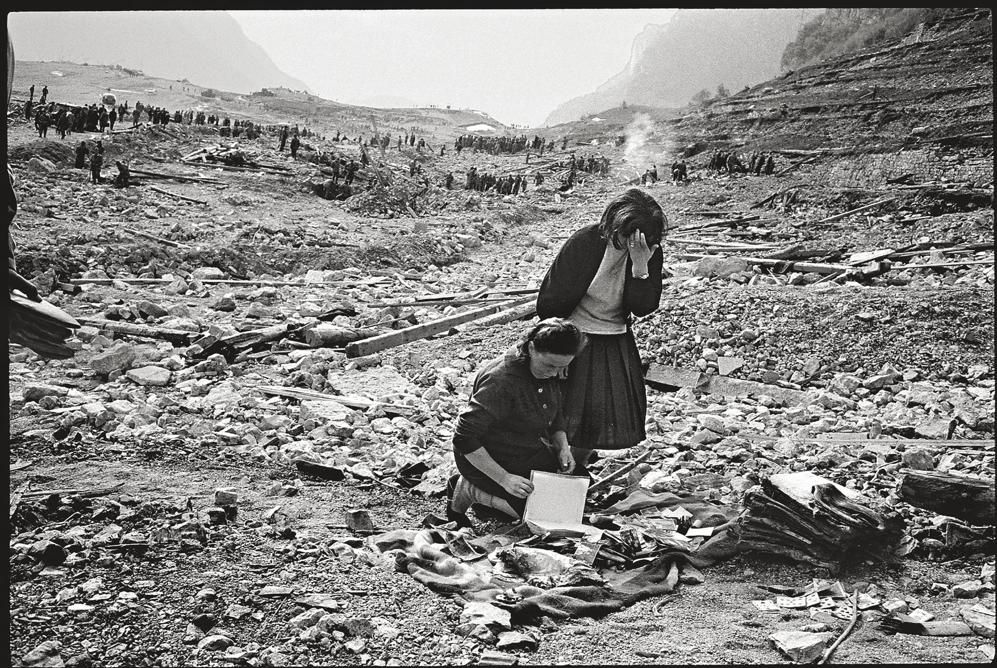
Two women mourns the loss of their home and village.
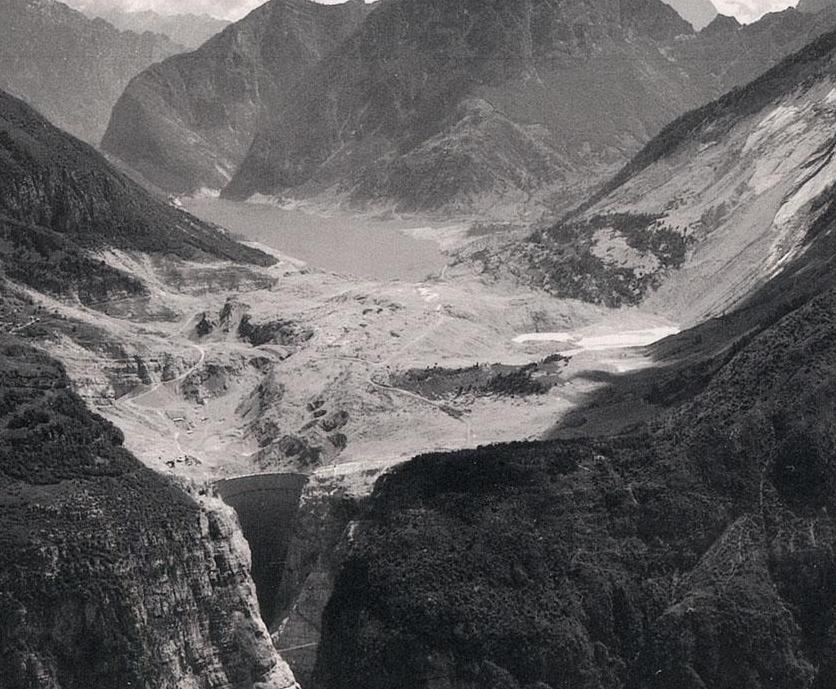
Aerial view of the Vajont reservoir and dam shortly after the disaster showing the lake filled with mud and debris from the landslide.
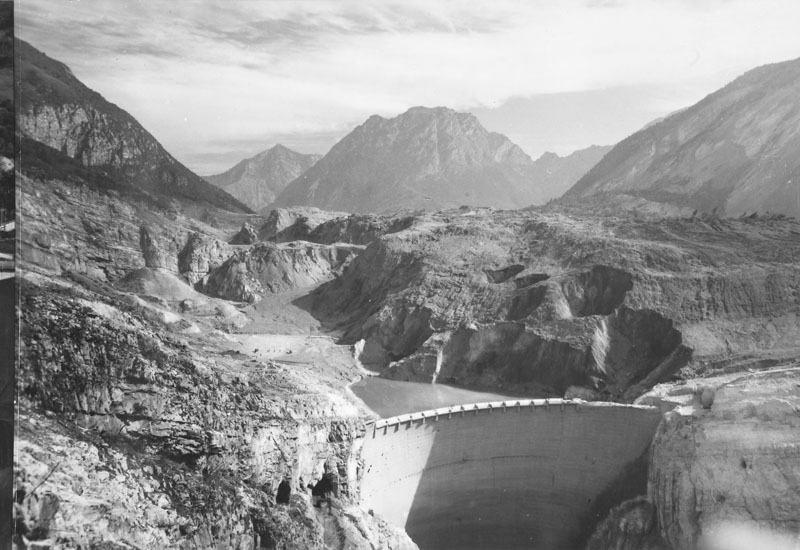
Another view of the dam after the disaster.
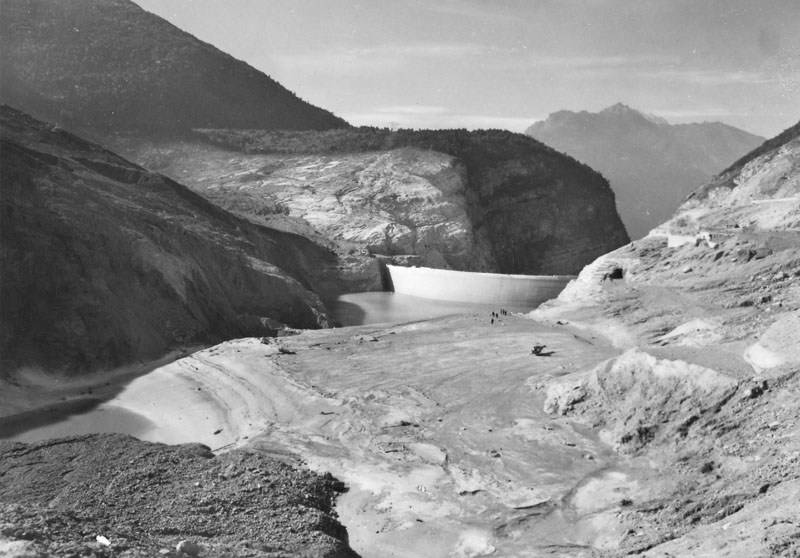
The landslide seen from the reservoir side of the dam.

The Vajont Dam today. Photo: Devis_Sole/Shutterstock.com

The back of the dam is now empty. Photo: Silvia Maggi/Flickr

Aerial view of the Vajont dam. Photo: IURII BURIAK/Shutterstock.com
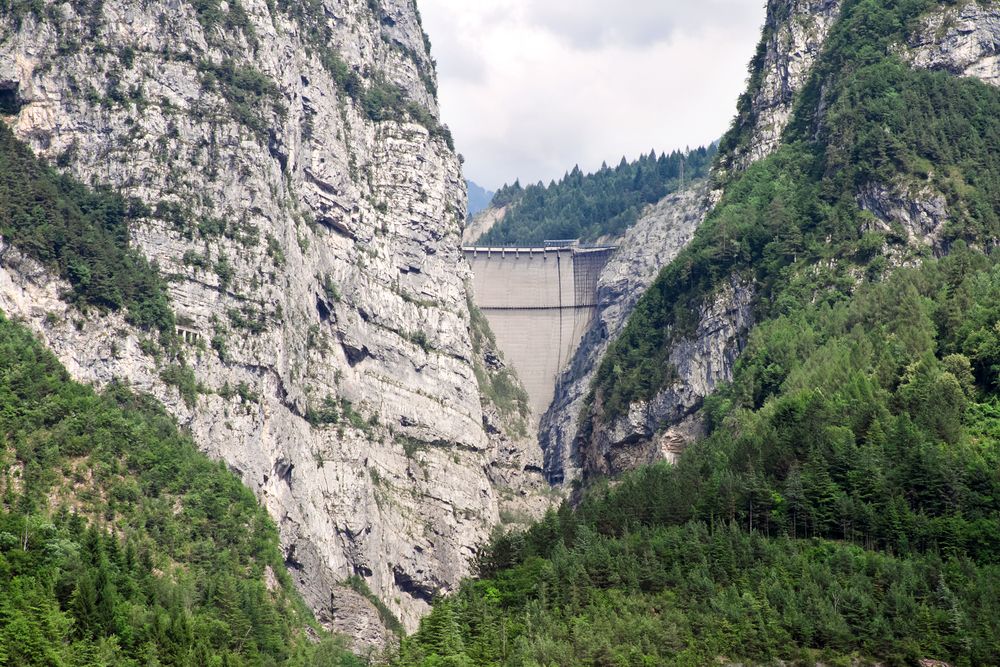
Photo: Migel/Shutterstock.com
References:
# Dave Petley, The Vaiont (Vajont) landslide of 1963, https://blogs.agu.org/landslideblog/2008/12/11/the-vaiont-vajont-landslide-of-1963/
# David Bressan, October 9, 1963: Vajont, https://blogs.scientificamerican.com/history-of-geology/october-9-1963-vajont/
# Rinaldo Genevois, Monica Ghirotti, The 1963 Vaiont Landslide, https://www.researchgate.net/publication/228930576_The_1963_Vaiont_Landslide
# Lee Mauney, Vajont Dam (Italy, 1963), https://damfailures.org/case-study/vajont-dam-italy-1963/
# Mark Duff, Italy Vajont anniversary: Night of the 'tsunami', https://www.bbc.com/news/world-europe-24464867



Comments
Post a Comment